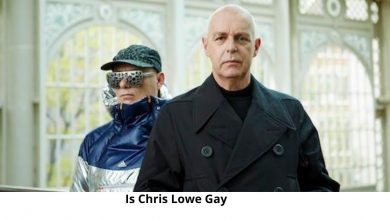In ‘Outside the Palace of Me,’ Shary Boyle captures the glamour of the stage while inviting us to be part of the show
It’s a rainy Tuesday, unburying the soggy detritus left on Toronto sidewalks after the recent snowfalls. Outside the Gardiner Museum on Queens Park, police cars cordon off the road to block any potential demonstrations threatening to shut down the nearby legislature.
It’s a grey, depressing scene of division: between seasons, political views, hate and empathy. It’s hard not to feel a little helpless standing at this busy intersection.
But up on the third floor of the Gardiner, Toronto multimedia artist Shary Boyle’s stunning exhibition, “Outside the Palace of Me,” is a respite from the dreariness outside. The show, which features ceramics, paintings, music and animatronics, is all bright colours and beauty, theatre and drama, feathers and gold leaf. As impresario of this wild world, Boyle captures the glamour of the stage while inviting us to be part of the show and consider our place in society.
“Outside the Palace of Me” — Boyle’s first Canadian touring exhibition since she represented the country at the 2013 Venice Biennale — is divided into eight sections inspired by various aspects of theatre.
Boyle is most often associated with her porcelain sculptures, subverting the prized Royal Doulton from Grandma’s curio cabinets into hybrid folkloric creatures that manage to be both horrifying and seductive at the same time. We are greeted by three such creatures as we enter, but they’re not all they seem. The smoke and mirrors come later.
In the “Stage” portion of the show, there are 10 sculptures on plinths that speak to a variety of themes. There is the elegant “Peacock Spider” who sits atop a graceful arched hand, adorned with acrylic nails created by local nail artist Justin Cappelletti. For those unfamiliar with the social-media friendly arachnoids, the colourful males must dance for their lives to entertain their female mates — if they’re unimpressed, the guys end up as dinner. The piece might suggest danger, but more so it celebrates Black, drag and genderqueer beauty.
“Scarborough” is a mixed-emotion nod to Boyle’s hometown and working-class roots. Unlike the high gloss of some of her other figures, this creature is created mostly out of earthy terracotta, except for his glossy winged head. Reminiscent of a Hummel figurine ready for a bush party, he carries a pack of smokes in his back pocket, a stubby bottle of beer perched on the fence. Hopefully he can avoid the poison ivy and lily of the valley, carved into the wooden base by Yorgo Liapis.
Boyle left Scarborough at 16. After graduating from the Ontario College of Art in 1994, she garnered much attention on the Queen Street West indie arts scene, finding a home at the beloved Katharine Mulherin Gallery. She also found a new musical fan base, providing atmospheric visuals and live projections for the likes of Feist, Peaches and Christine Fellows.
But not all is as it seems in this palace. “The Puppet Show at the Wax Museum” section is set against a Looney Tunes-painted backdrop, featuring a lifelike “Judy,” named after the famous puppet who suffers at the hands of her husband, Punch.
At first this woman in jeans and a turtleneck appears to be an actor, manipulating a set of marionettes and puppets, until you realize she has four arms and that wisps of llama hair are draped from her eyebrows (a gift from hyperrealist artist Evan Penny). Boyle studied with puppet makers and an animatronics specialist from Niagara Falls to create her vision, very aware that these art forms are dominated by men.
“I’ve always been hypersensitive to power,” said Boyle. As a young artist, that meant examining gender constructs through her sculptures and paintings. But like many white Canadians, she is now grappling with her legacy as a settler, and “what my skin represents to so many people in terms of harm and historical injustice, and systemic current injustices. It has become more intersected than ever before.”
That’s when we arrive at “Whiteness,” a section of the show that deals with white anger and guilt. While it may seem out of place in a theatre setting, one only has to think about the history of the stage and whose stories have dominated history.
In the painting “Lone Gunman,” a cherubic boy who appears to have popped out of the pages of an adventure kids’ book saunters along with machine gun in hand, as animals scurry and Lon Chaney Jr. as the Wolf Man is conjured out of the sky. “Settler” features a bonneted young woman smoking a joint, her nipple rings barely visible under her sheer dress. There are shackles and an ominous hand reaching for her from a covered wagon, suggesting both the whitewashing of pioneer history and the entrapped role of women during that era.
“This whole wall is devoted to some investigations of whiteness for myself as a white person hoping to speak to other white people about the positions that we’ve occupied and the complications,” said Boyle.
The paintings flank what is literally the “White Elephant” in the room. An eight-foot-tall woman with chalk-white porcelain skin and awkwardly elongated limbs appears to have fallen through Alice’s looking glass — until her head spins and suddenly we’re in “The Exorcist.” Talking about privilege is a horror for many.
Boyle acknowledges that these pieces deal with a defensive subject. “But ultimately, I think many white people are really reckoning and considering what their position in this country represents in terms of their own spin, and their own responsibility and culpability. It is a really complicated thing to deal with guilt and shame, not to be defensive and not retreat, but go forward and try to keep open, and learn and change things for the better.”
Boyle asks visitors to not just think about what’s on the walls, but to participate in her palace. “The Star” is a pretty pottery wheel when still. But if you put in a loonie or toonie and hit the foot pedal, she spins to life, bedazzled like a moving social-media filter.
The “Orchestra” gives visitors a chance to create their own soundtrack to the exhibition. Tucked away in an intimate corner you can sit on three plush red chairs, originally from the Royal Alexandra Theatre. “Thousands of people have sat in those chairs, watching performances,” said Boyle.
Pick from tunes that in some way speak to themes in the show, from karaoke favourites like Sly and the Family Stone’s “Everyday People” to Kae Tempest’s “Europe Is Lost,” lyrics from which Boyle borrowed for the name of the exhibition.
“This is about your own individual participation and engagement with each other in a respectful and loving way. A lot of people have been trapped at home under-stimulated, or looking at the computer and social media far too much,” said Boyle, playing the role of ringmaster. “Come in here and see something three-dimensional; there’s so much material love and care in this show.”
JOIN THE CONVERSATION




